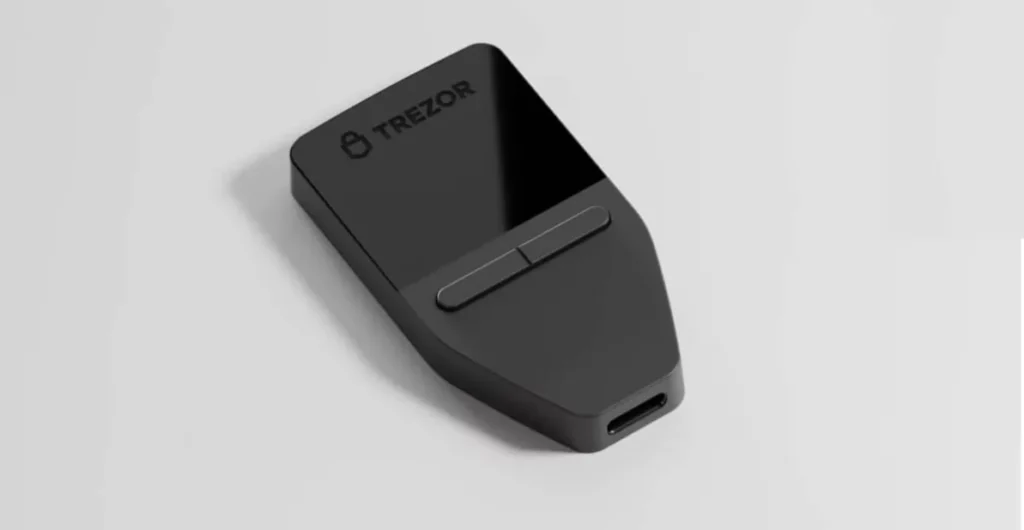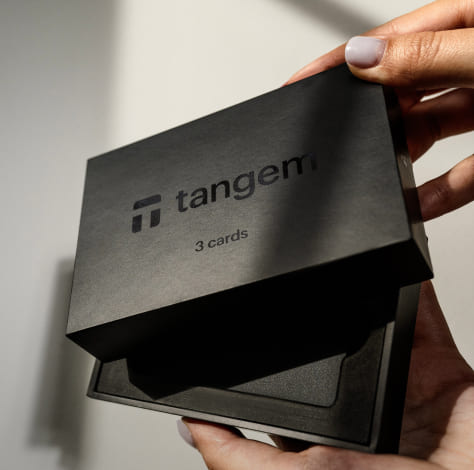
There’s a significant difference between cold storage and hot wallets when it comes to the security of your digital assets. Cold storage, being offline, offers superior protection against hacking attempts and cyber threats, making it ideal for long-term holdings. In contrast, hot wallets provide convenience for frequent transactions but expose assets to potential online vulnerabilities. This post will assess the security risks associated with each, helping you make an informed choice for safeguarding your cryptocurrency investments.
Understanding Cold Storage
To maintain the utmost security for cryptocurrencies, cold storage serves as an crucial method for safeguarding digital assets. Unlike hot wallets, which are connected to the internet, cold storage refers to methods of storing cryptocurrencies offline. This disconnection from the internet minimizes the risk of hacks, providing a safer environment for long-term asset holding.
Definition and Characteristics
Beside being offline, cold storage methods include hardware wallets, paper wallets, and other forms of storage that are not accessible through an internet connection. These wallets store the user’s private keys offline, ensuring that sensitive information remains secure from online threats.
The key characteristics of cold storage are its physical form and limited accessibility, which enhances security by requiring physical access to the storage device. This means even if a hacker gains access to a network, the coins held in cold storage are virtually untouched and insulated from potential attacks.
Advantages of Cold Storage
Around the world, cold storage offers significant advantages for individuals and institutions managing cryptocurrency. The primary benefit is enhanced security; cold storage greatly reduces exposure to hacking and malware attacks compared to hot wallets. This makes it an ideal choice for those holding large amounts of cryptocurrency or for long-term investors.
At the same time, cold storage solutions allow users to maintain control over their private keys, which is crucial in protecting against theft. Given their offline nature, they are less susceptible to cyberattacks, ensuring that your assets remain safe even during times of high market volatility. This increased level of security is paramount for safeguarding investments in an ever-evolving digital landscape.
Understanding Hot Wallets
Even though cryptocurrency users often prioritize security, hot wallets serve a vital function in the digital asset landscape. These wallets are connected to the internet, allowing for immediate access to funds and facilitating rapid transactions. They are typically used for day-to-day activities and trading, making them necessary tools for active investors.
Definition and Characteristics
Definition: A hot wallet is a type of cryptocurrency wallet that is constantly connected to the internet, providing users with the convenience of easy access to their digital currencies. They can be found in various forms, such as online platforms, mobile applications, and desktop software. Hot wallets store private keys online, which allows for quick transactions but also makes them more susceptible to hacking and cyber attacks.
Advantages of Hot Wallets
Above all, hot wallets offer exceptional convenience and accessibility for users looking to manage their cryptocurrency on the go. Their ability to connect to exchanges and facilitate swift transactions makes them ideal for active traders. Additionally, many hot wallets come with user-friendly interfaces that simplify the process of buying, selling, and managing digital assets.
Hence, hot wallets stand out for their ease of use and real-time trading capabilities, which can significantly enhance the user experience. The ability to perform transactions quickly is beneficial for traders looking to capitalize on market fluctuations. However, this convenience comes at the cost of security, as hot wallets are more vulnerable to hacking and other online threats. Users must weigh the benefits against the risks associated with storing their cryptocurrency in such a readily accessible format.
Security Risks of Cold Storage
One of the primary concerns with cold storage is its vulnerability to physical threats. While cold storage methods, such as hardware wallets or paper wallets, are not connected to the internet, they are still susceptible to theft, loss, or damage. If an attacker gains physical access to the storage device, they can easily compromise the stored assets. Additionally, environmental factors, such as fire or water damage, can pose significant risks to the integrity of these storage solutions.
Physical Threats
Between the inherent risks associated with physical possession, cold storage users must also consider the likelihood of human negligence. For instance, misplacing or accidentally disposing of a hardware wallet can result in irreversible loss of funds. Furthermore, if proper preventive measures are not taken, users may inadvertently expose their cold storage devices to potential threats, such as leaving them unattended in a vulnerable location.
User Error Risks
Error in managing cold storage often leads to severe repercussions for users. Simple mistakes, such as failing to create backups or incorrectly handling private keys, can result in permanent loss of access to funds. Users may struggle with securely storing recovery phrases, which are crucial for restoring their wallets should the original device be lost or damaged.
Consequently, a single moment of inattention can lead to the irretrievable loss of assets, making it crucial for users to develop a strong understanding of their cold storage method. Practicing careful management and crafting a robust plan for backup and recovery can help mitigate these risks, ensuring that cold storage remains a secure option for protecting assets.
Security Risks of Hot Wallets
Keep in mind that hot wallets are inherently more vulnerable to online threats due to their constant connectivity to the internet. They are frequent targets for cybercriminals utilizing a variety of methods, including phishing attacks, malware, and hacking attempts. Users may unknowingly expose their wallet credentials through insecure networks or fake websites, which can lead to unauthorized access and significant financial loss.
Online Threats and Vulnerabilities
Any hot wallet can be compromised if the user falls victim to social engineering tactics or if security measures are insufficient. Once a hacker gains access to a wallet, they can quickly transfer the assets to their own accounts, often making recovery difficult or impossible. Additionally, as technology evolves, so do the methods of attack, meaning hot wallets are at constant risk of new vulnerabilities being exploited.
Software Malfunction Risks
Software malfunctions pose an additional risk for hot wallets, as they rely on complex algorithms and regular updates to operate securely. When software issues arise, they can result in loss of access to funds or even direct theft if security protocols are disabled. Regular app updates are necessary, but they can sometimes introduce new vulnerabilities if not executed properly.
But the real danger lies in the reliance on software integrity. If a hot wallet application has a bug or becomes outdated, it can inadvertently expose the wallet to potential exploits. Users may find themselves unable to access their funds entirely, or worse, become victims of fraud. Adequate measures must be in place to ensure that these digital wallets remain updated and secure, as the consequences of malfunction can be severe.
Comparing Security Measures
Unlike hot wallets, which are continuously connected to the internet, cold storage solutions significantly reduce exposure to online threats. Cold storage options, such as hardware wallets or paper wallets, prioritize security by keeping private keys offline. In contrast, hot wallets provide ease of access and quicker transaction capabilities but carry higher risks of hacking and unauthorized access.
| Cold Storage | Hot Wallets |
| Offline storage | Online access |
| Less susceptible to hacking | Higher risk of breaches |
| Requires physical security measures | Convenient and user-friendly |
Best Practices for Cold Storage
One effective approach to cold storage is to use hardware wallets that are designed specifically for securely retaining private keys. These devices offer durability and often come with built-in security features such as PIN protection and encryption. Additionally, for those opting for paper wallets, it’s important to generate them in a secure environment to prevent exposure to malware.
One must also ensure that the physical copies of private keys are kept in secure locations, like safes or bank safety deposit boxes. Regularly updating and reviewing security practices can further enhance protection against potential threats. This layered approach fosters a more secure storage environment.
Best Practices for Hot Wallets
On the other hand, to maximize security in hot wallets, employing two-factor authentication (2FA) is vital. This additional layer of security helps prevent unauthorized access, even if someone has the wallet’s password. Keeping software up to date with the latest security patches also reduces vulnerabilities against cyber attacks.
On a broader scale, establishing a withdrawal limit can further minimize potential losses in the event of a breach. Users can also consider utilizing multi-signature wallets, requiring more than one key to authorize transactions, enhancing the overall security framework.
Hence, selecting reputable and secure exchanges is critical for hot wallet management. Consistently monitoring account activity and being aware of phishing attempts can also provide added security. Making informed choices regarding wallet selection and operational practices is important to effectively mitigate risks associated with hot wallets.
Case Studies
After examining various instances within the cryptocurrency landscape, it becomes evident that both cold storage and hot wallets have their unique security challenges. Below is a detailed list of notable case studies highlighting significant incidents and their impacts:
- Mt. Gox – In 2014, a hot wallet breach led to the loss of 850,000 BTC, equating to approximately $450 million at that time.
- Coincheck – A hot wallet hack in 2018 resulted in the theft of $530 million in NEM tokens.
- Bitfinex – In 2016, a hot wallet hack compromised 120,000 BTC, totaling around $72 million.
- Bitgrail – The 2018 breach exploited a hot wallet security gap, leading to a loss of $170 million in Nano tokens.
- LedgerSome of the links on this page are affiliate links. If you purchase a cold wallet through these links, we may earn a commission at no extra cost to you.’s Phishing Attack – In 2020, a data breach exposed customer information, impacting over 1 million users of their cold storage devices, but no funds were lost.
- Bitstamp – In 2015, a hot wallet incident saw hackers steal نحو $5 million worth of BTC.
High-Profile Cold Storage Breaches
Along with the rise of cryptocurrency, cold storage breaches have also emerged, albeit less frequently than their hot wallet counterparts. Notable cases highlight the potential vulnerabilities in cold storage, often arising from human error rather than technical flaws. An example includes the case of Parity Wallet, where a flaw in the smart contract led to $150 million being locked forever, demonstrating the risks inherent in cold storage systems.
Furthermore, the Mt. Gox case also sheds light on the need for better management practices in cold storage, despite its primary focus on hot wallets during its collapse. While these cases are not as frequent, they underline the importance of implementing robust processes and audits to safeguard assets stored offline.
High-Profile Hot Wallet Breaches
Against the backdrop of increasing digital asset adoption, hot wallets have faced numerous high-profile breaches that highlight their vulnerabilities. The Mt. Gox hack of 2014 devastated the exchange and shook investor confidence, as it involved the theft of substantial amounts of cryptocurrency from an online wallet. Similarly, the Coincheck hack of 2018 showcased how easily hackers could exploit hot wallet systems, leading to significant financial losses for investors.
Continuous reassessment of security protocols for hot wallets is necessary as exchanges frequently become targets for cybercriminals. The general trend indicates that as the value of cryptocurrency rises, so does the *motivation behind attacks*. The need for advanced security measures, such as multi-signature wallets and enhanced encryption, is imperative to protect against future breaches and safeguard user funds.
Understanding the ongoing threats posed to hot wallets is vital for both exchanges and users. Acknowledging that the majority of these breaches stem from inadequate security protocols rather than the technology itself can aid in developing more effective protective measures. Continuous education on safeguarding assets, daily monitoring, and enforcing stricter regulations might help prevent substantial losses in the future.
Summing up
Summing up, Cold storage wallets offer a higher level of security against online threats, making them ideal for long-term cryptocurrency holdings. They are not connected to the internet, which significantly limits the risk of hacking and unauthorized access. However, users must manage the physical security of these devices to prevent loss or damage, which can also lead to irretrievable loss of funds.
Hot wallets, while convenient for daily transactions and easier access, expose users to higher risks of cyber attacks and phishing schemes due to their online nature. For those engaged in frequent trading, a combination of both wallet types may be effective, striking a balance between security and accessibility. Ultimately, understanding the strengths and weaknesses of each wallet type assists users in making informed decisions concerning their cryptocurrency storage and security practices.







